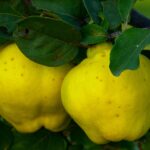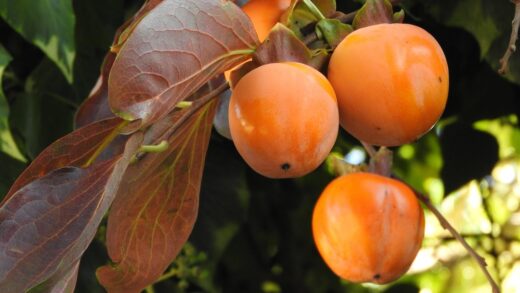The topic of overwintering Cosmos bipinnatus, the common garden cosmos, is a simple one, as these plants are true annuals. This means they complete their entire life cycle—from germination to growth, flowering, seed production, and death—within a single growing season. They do not possess the perennial root structures or woody stems that would allow them to survive through the cold temperatures and frost of winter. Therefore, the primary strategy for “overwintering” cosmos is not about keeping the individual plant alive, but about ensuring its continuation into the next year through the collection and saving of its seeds.
When the first hard frost of autumn arrives, the tender foliage and stems of the cosmos plant will be killed, and the plant will naturally die back. There are no special procedures or protections that can be implemented to save it. This is a natural and expected conclusion to its life cycle. The focus for the gardener at this stage shifts from preserving the existing plant to harvesting the genetic legacy it has produced in the form of seeds. This approach embraces the annual nature of the plant and provides a sustainable way to enjoy its beauty year after year.
It is important to distinguish the common annual cosmos from other, less common members of the genus that are tender perennials. For example, the chocolate cosmos, Cosmos atrosanguineus, grows from a tuberous root and can be overwintered in colder climates by lifting the tubers from the ground after the first frost and storing them in a dormant state over the winter, much like one would do with dahlias. However, this process does not apply to the vast majority of cosmos grown in gardens, which are the annual Cosmos bipinnatus or Cosmos sulphureus varieties.
For these annual varieties, the end of the season is a time for planning for the next. By allowing some of the last blooms of the season to mature and form seed heads, you are actively participating in the plant’s life cycle. The simple act of collecting, drying, and storing these seeds is the true method of ensuring your cosmos “survive” the winter. This practice is not only practical and economical but also deeply rewarding, connecting the gardener to the timeless rhythm of the seasons and the cycle of life in the garden.
Understanding the annual nature of Cosmos bipinnatus
Cosmos bipinnatus is classified as a tender annual. The term “annual” signifies that the plant’s natural life span is confined to one year or one growing season. It germinates from a seed in the spring, grows, flowers, and produces seeds all within that single period, and then dies with the onset of winter frost. This life strategy is in contrast to perennials, which live for multiple years, or biennials, which have a two-year life cycle. Understanding this fundamental characteristic is crucial, as it dictates the entire approach to end-of-season care.
More articles on this topic
The plant’s inability to survive the winter is due to its cellular structure and its lack of specialized overwintering organs. The stems, leaves, and roots are all composed of soft, tender tissue that is high in water content. When temperatures drop below freezing, the water within these cells freezes, expands, and ruptures the cell walls, causing irreparable damage to the plant’s tissues. Unlike hardy perennials, it has not evolved mechanisms like dormancy or the storage of energy in protected underground roots to withstand these conditions.
Because of their annual life cycle, there is no benefit to attempting to protect cosmos plants from the first frost with blankets or covers, as one might do for a tender perennial to extend its season slightly. The first hard frost will inevitably kill the plant. The effort is better spent on the more productive task of collecting seeds from the healthiest plants before the weather turns. This proactive approach ensures that you have a robust supply of seeds ready for the next spring.
This annual life strategy has advantages for the gardener. It means you can completely redesign your planting schemes each year, trying new colors, heights, and combinations without having to work around permanent perennial plantings. It also means that cosmos are fast-growing and eager to flower, as they have a limited time to complete their reproductive cycle. This results in the profuse, season-long blooming that makes them so beloved in the garden.
The primary method: collecting and storing seeds
The most effective and traditional method for ensuring you have cosmos in your garden the following year is by saving their seeds. This process should begin in late summer or early autumn. As you deadhead your plants throughout the season, make a conscious decision to leave some of the last flowers on your best-performing plants to mature. Select plants that have demonstrated desirable traits, such as strong stems, a prolific number of blooms, or a particularly beautiful color, to be your seed parents.
More articles on this topic
To collect the seeds, you must wait for the flower heads to dry completely on the plant. The colorful petals will wither and fall away, and the central part of the flower head will turn from green to a dry, brittle brown. This indicates that the seeds inside are ripe. On a dry day, use scissors or pruning shears to snip off the entire dried seed head. You can collect these heads in a paper bag or a bucket. It is important to wait until they are fully dry, as harvesting them too early will result in immature, non-viable seeds.
Once you have collected the dried heads, the next step is to separate the seeds from the chaff (the other dried flower parts). This is easily done by placing the heads in a bowl or on a tray and gently crushing them between your fingers. The seeds, which are small, black or dark brown, and shaped like tiny needles or spindles, will fall away from the rest of the material. You can then carefully winnow the seeds by gently blowing on them to remove the lighter chaff, leaving the heavier seeds behind.
Proper storage is the final and most critical step to ensure the seeds remain viable until spring. After separating them, spread the seeds out on a plate or a screen in a single layer and leave them in a cool, dry, well-ventilated place for another week or so to ensure they are completely moisture-free. Any residual moisture can lead to mold and ruin the entire batch. Once they are thoroughly dry, place them in a labeled paper envelope or a small, airtight glass jar. Store the container in a cool, dark, and dry location, such as a refrigerator or an unheated closet, until you are ready to plant them next season.
Protecting self-sown seedlings in milder climates
In regions with very mild winters, where the ground does not freeze solid for extended periods (roughly USDA zones 8 and above), cosmos can sometimes “overwinter” in a different way: through self-sowing. If you leave the dried seed heads on the plants at the end of the season, the seeds will naturally disperse and fall to the ground. Some of these seeds may germinate in the autumn, while others will lie dormant in the soil over the winter and sprout in the spring as the soil warms up. This can result in a naturalized, meadow-like planting of cosmos that returns each year.
To encourage this process, you can assist nature by gently shaking the dried stems over the area where you would like the cosmos to grow next year, ensuring the seeds are distributed. After the plants have died back, you can leave the dead foliage in place for a portion of the winter to provide a light, natural mulch that helps to protect the seeds scattered on the soil surface. This layer of organic matter can offer a small amount of insulation and help prevent the seeds from being washed away by heavy winter rains.
In the spring, as you are cleaning up your garden beds, be mindful of the potential for self-sown seedlings. They will look like tiny versions of the feathery cosmos foliage. It is important to be able to distinguish them from weeds so that you do not inadvertently pull them up. These volunteer seedlings can be left to grow where they are, or they can be carefully thinned out to prevent overcrowding. You can even transplant some of the sturdier ones to other parts of your garden to fill in any gaps.
While self-sowing can be a delightful and low-effort way to have cosmos return each year, it does have a downside. The resulting plants can be less predictable in terms of color and form, as they may have cross-pollinated with other varieties in your garden. Additionally, the germination can be patchy, leading to a less uniform display than you would get from intentionally sowing saved or purchased seeds. Nevertheless, for a more informal, cottage-style garden, embracing the serendipity of self-sowing can be a wonderful and rewarding experience.
Distinguishing from perennial cosmos varieties
It is important for the topic of overwintering to be clear about the distinction between the common annual cosmos and its lesser-known perennial relatives. The vast majority of cosmos seeds and plants available in garden centers are annuals, specifically Cosmos bipinnatus and Cosmos sulphureus. As discussed, these plants cannot be overwintered and must be grown from seed each year. Their life cycle is genetically predetermined to be completed in one season.
However, there is a notable exception: Cosmos atrosanguineus, commonly known as chocolate cosmos. This species is a tender perennial native to Mexico, famed for its deep, velvety crimson flowers that have a distinct chocolate-like fragrance. Unlike its annual cousins, chocolate cosmos grows from a fleshy, tuberous root, similar to a dahlia. It is this tuber that allows the plant to be overwintered, as it serves as an energy storage organ.
In climates where winter temperatures drop below freezing (colder than USDA Zone 7), the tubers of chocolate cosmos must be lifted from the ground to be saved. After the first frost has killed the top growth, the stems should be cut back to a few centimeters above the ground. The tubers are then carefully dug up, cleaned of excess soil, and allowed to air-dry for a few days in a shady, well-ventilated spot. Once dry, they can be stored in a box of slightly damp peat moss, sand, or vermiculite in a cool, dark, and frost-free location, such as a garage or basement, until it is time to replant them in the spring.
This significant difference in life strategy and overwintering requirements highlights the importance of knowing exactly which species of cosmos you are growing. Confusing the two could lead to disappointment. Trying to save an annual cosmos plant from frost is a futile effort, while leaving the tubers of a perennial chocolate cosmos in the ground in a cold climate will result in their death. For the beloved, common garden cosmos, the simple and effective path to “overwintering” will always be through the sustainable cycle of saving and sowing seeds.


















